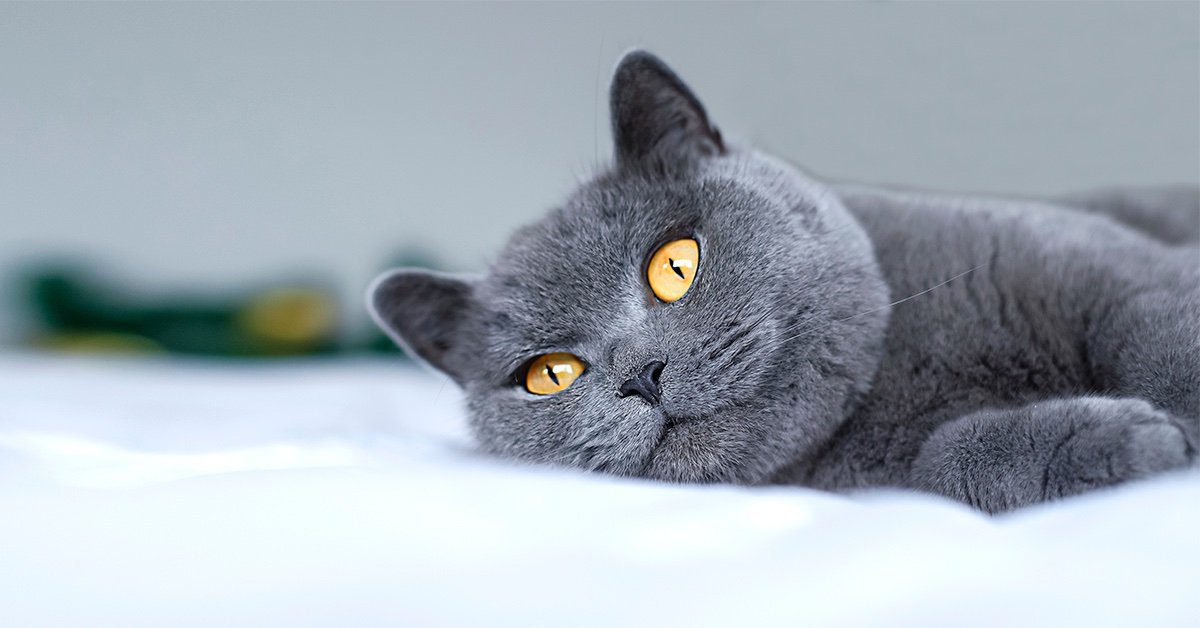Cats are known for living long lives, sometimes well into their late teens and early 20s. Much like humans, their older years often come with chronic diseases that can cause a lot of pain, including feline osteoarthritis.
Although cat arthritis is a common condition that causes painful joints and makes moving uncomfortable, the signs of arthritis are often dismissed as the natural slow down that comes with aging. Arthritis can make it difficult for your once energetic cat to jump to a favorite spot on the couch, climb stairs, or even enjoy cuddling up next to you after a long day.
While there isn’t a cure for arthritis in cats, you can take steps to slow disease progression and help your cat live a better life. Here, we’ll discuss the symptoms, causes, and treatment of arthritis in cats, and how to make your cat as comfortable as can be.
What causes arthritis in cats?
Feline arthritis is a degenerative joint disease caused by the wearing away of joint cartilage (tissue that protects the ends of bones). Like humans, cats have cartilage between the bones in their joints, which help cushion the impact as they move around. Without this cushion, the bones are able to rub against each other which results in excruciating pain, making it difficult for cats to engage in everyday activities and ultimately affecting their quality of life. Arthritis most commonly affects a cat’s spine, hip, knee, ankle, and elbow joints. A cat’s lower back is a common spot for arthritis, often because of painful, boney spurs along the underside of the spine.
Although the cause of arthritis in cats isn’t always known, arthritis is most commonly linked to aging, but can also include:
- Abnormalities: Abnormal hip or joint development may affect cartilage around joints.
- Injuries: When a cat experiences a joint fracture or injury, it may cause arthritis.
- Wear and tear: As the cat gets older, joints may weaken.
- Obesity: Overweight and obese cats are prone to arthritis due to the added pressure that extra pounds can put on their joints.
Some cat breeds have an increased risk of arthritis due to the abnormal development of their cartilage or hips. This is most commonly seen in Maine Coon, Persian, Scottish Fold, and Siamese cats.
What are the signs of arthritis in cats?
Arthritis in cats can be tough to spot. The signs are subtle, and cats are notoriously independent and tend to hide or mask their pain. But, that doesn’t mean arthritis is impossible to spot. Along with reduced mobility and everyday activity, behavioral signs of osteoarthritis include:
- Difficulty or hesitancy jumping up or down from furniture (tables, beds, chairs, favorite spots, etc.)
- Difficulty going up and down the stairs
- Limping
- Reduced height when jumping
- Inappropriate elimination (the cat cannot get over the edge of the litter box)
- Napping or resting more frequently than normal
- Poor grooming habits (longer claws due to lack of activity)
- Difficulty running
It’s difficult to spot the signs of arthritis in older cats who tend to sleep for longer periods of time as a natural part of aging, so it’s important to take your furry friend to their veterinarian for a proper diagnosis and treatment.
How is arthritis in cats diagnosed?
When it comes to helping your veterinarian diagnose arthritis in your cat, home observations are crucial. If you notice your cat hesitating to jump up on the couch, or slowly walking up the stairs, take a video so you can show your veterinarian. This way, you don’t need to rely on your memory and can show your veterinarian exactly what’s going on with your furry friend.
Your veterinarian will perform a physical examination of your cat thoroughly to look for any signs of pain and discomfort, including swelling or sensitivity in the joint areas. They will specifically look for visible joint pain or deformity, decreased range of motion, fluid in the joints, joint instability, and grating (scraping noise) when your cat moves. They may also order X-rays or blood tests to accurately diagnose your cat with osteoarthritis and rule out any other health issues or illnesses.
How is arthritis in cats treated?
There may not be a magic pill for curing arthritis in cats, but there are different treatment options that can help manage the pain:
- Prescription medications: If a cat is hurting, they probably won’t want to exercise, which is where medication becomes necessary. Safe and effective prescription medication options for arthritis are limited, but your veterinarian may prescribe medication to manage the pain and inflammation related to arthritis. Non-steroidal anti-inflammatory drugs (NSAIDs) are prescribed by a licensed veterinarian who can help determine the duration and type of treatment. The most common medication used for arthritis is meloxicam, which should be used with extreme caution and only under a veterinarian’s care.
- Weight loss and management: Managing a cat’s weight is a key part of treating arthritis. Extra weight puts more pressure on their joints which can worsen arthritis pain. If your arthritic cat is overweight, your veterinarian will most likely recommend a weight loss program, special diet, or exercise plan. At home, you can manage your cat’s weight by avoiding the temptation to offer extra treats and properly measuring food proportions.
- Pain control: Other forms of pain control can include acupuncture, laser therapy, massage therapy, and stem cell therapy. Supplements also help promote joint health, including omega-3 fatty acids, glucosamine, and chondroitin.
- Exercise: Regular exercise and maintaining a healthy body weight ensures a cat’s joints are healthy. Ask your veterinarian for tips on how to keep your arthritic cat moving safely.
Adjustments can also be made at home to increase your arthritic cat’s comfort. Make sure your cat has easy access to litter boxes, food, and water bowls, and they have supportive bedding when napping. Ramps or stairs are good additions to help your cat access your bed or other favorite spots around the house, and raised food and water bowls to ensure your cat doesn’t have to bend down. A litter box with at least one side lowered helps ensure your cat doesn’t need to lift their legs high to get in. Nonetheless, if you suspect your cat has arthritis, a licensed veterinarian can help you determine the best treatment option for your furry friend.
Remember, you know your cat best. Arthritis is a progressive disease, so if you notice your cat slowing down, be sure to take them to the veterinarian as soon as possible. You may be able to detect signs of arthritis early on and slow down its progression sooner – ensuring your cat a great quality of life.
Even though arthritis in cats is quite common, treating the disease can be costly. Pumpkin Cat Insurance plans can help cover the cost of treatment and alternative therapies for arthritis that may develop in the future.




